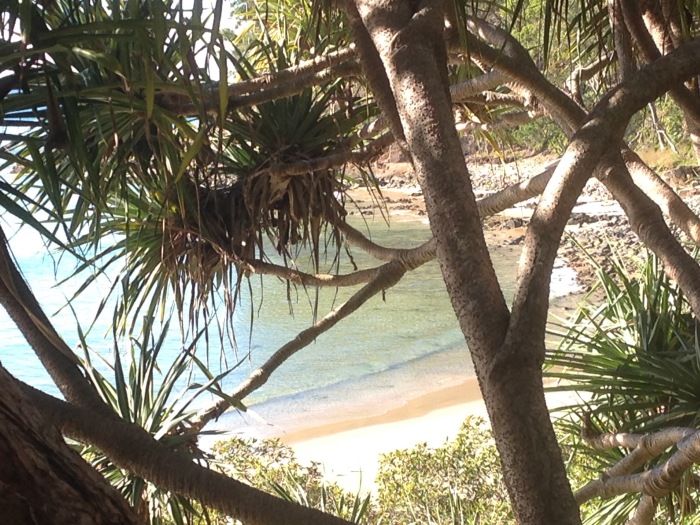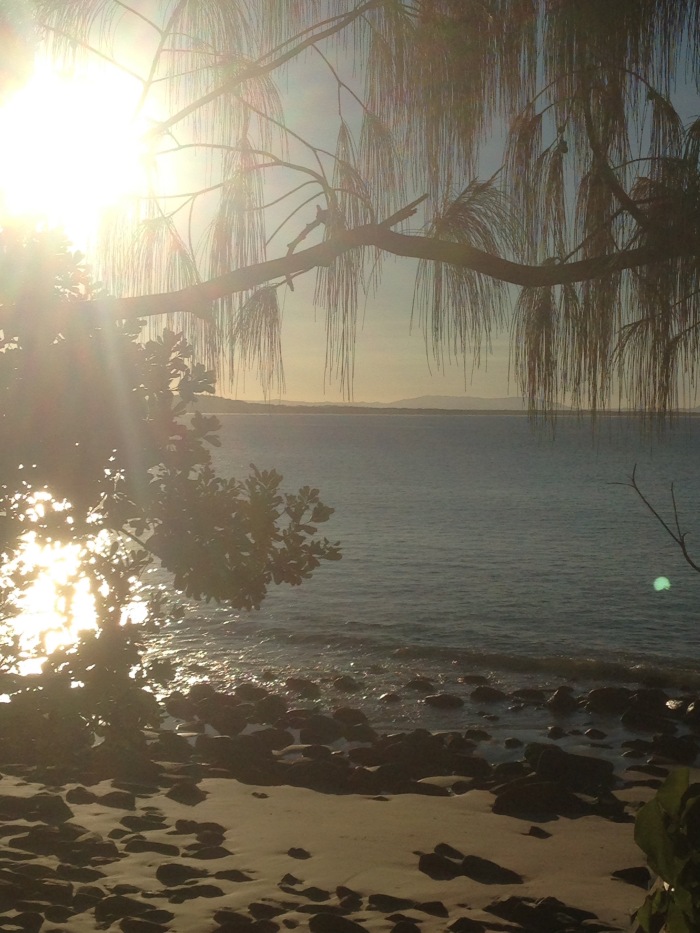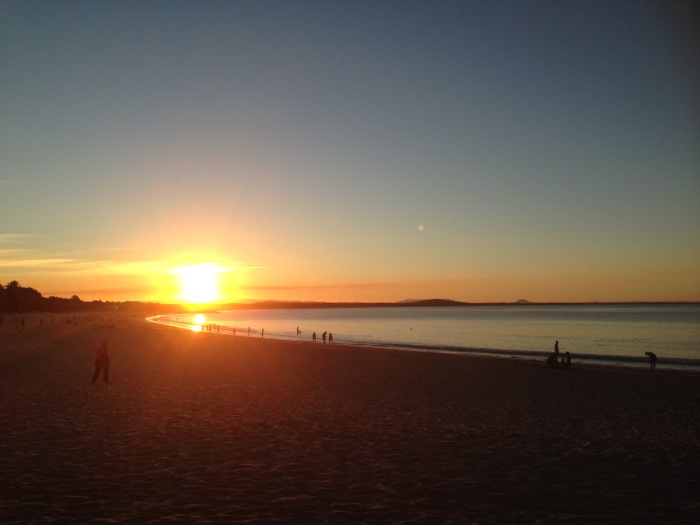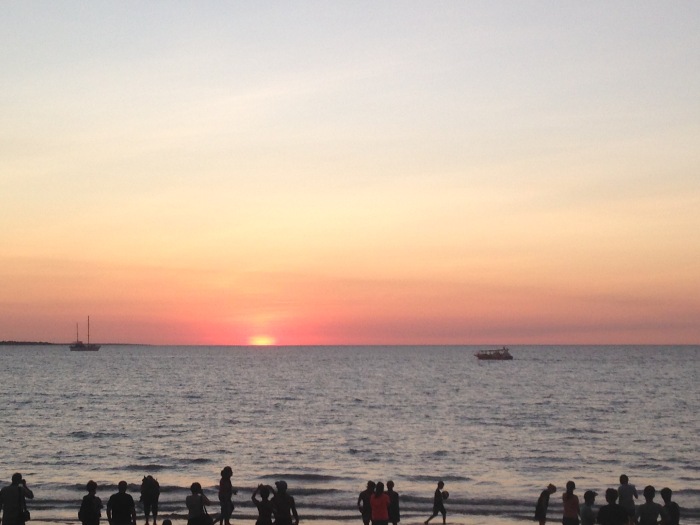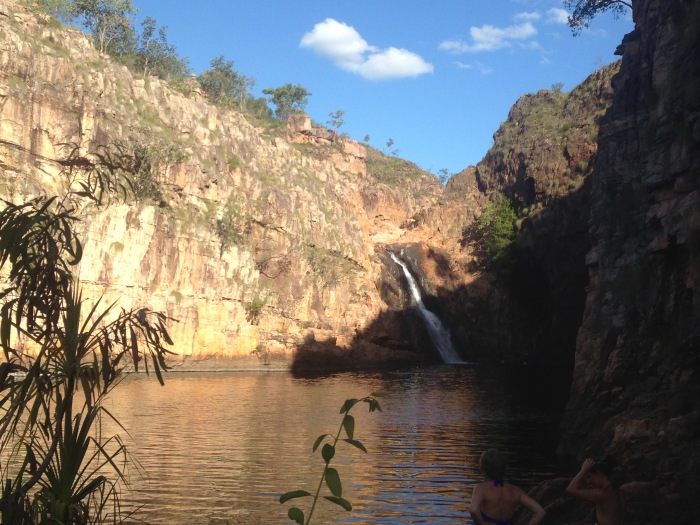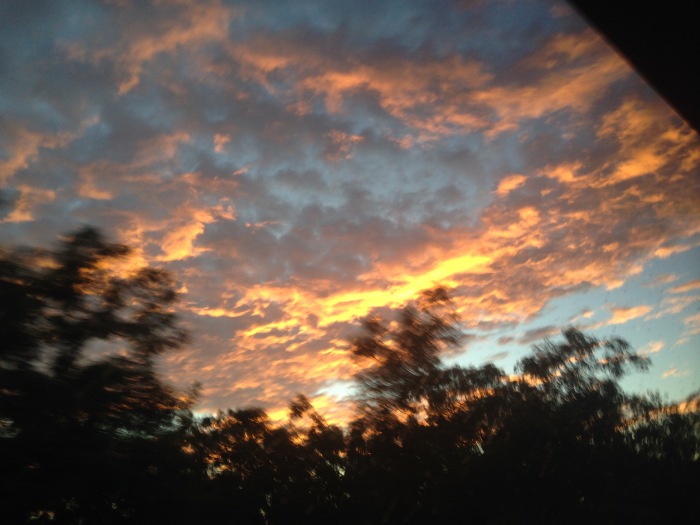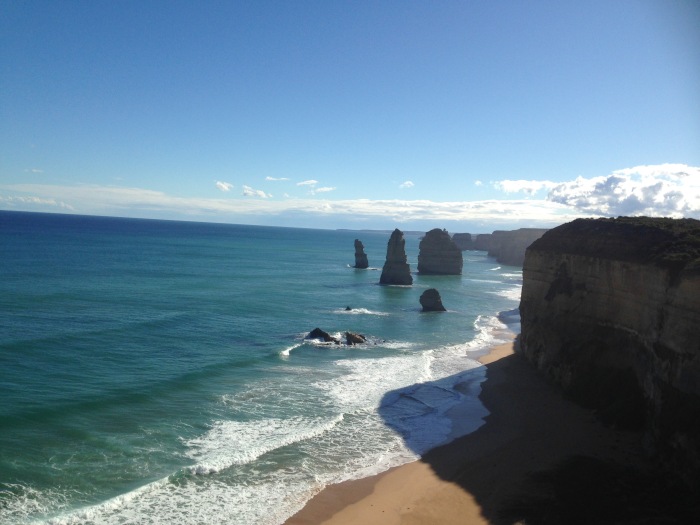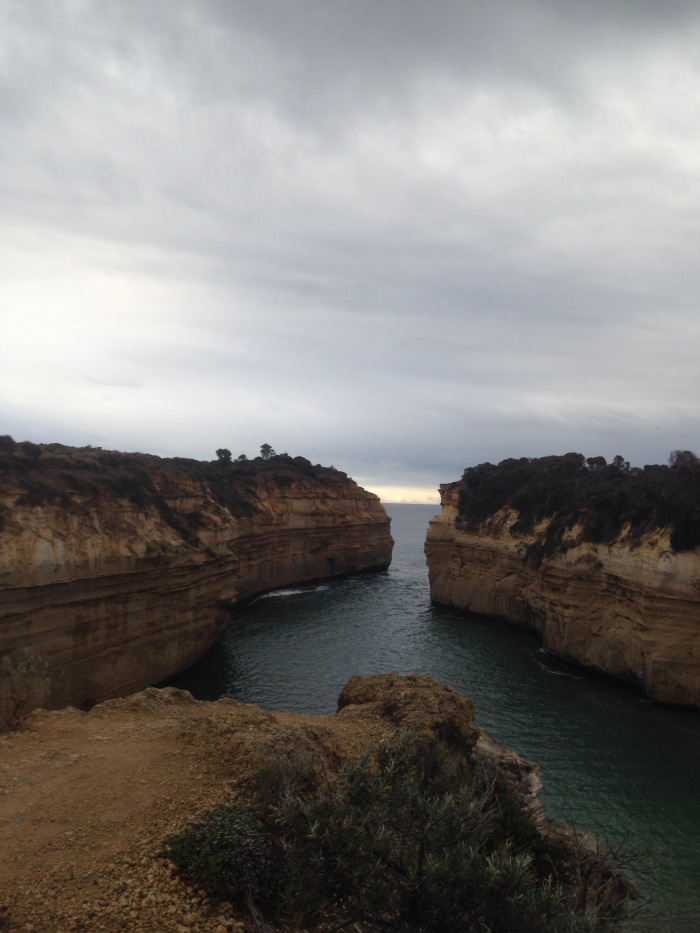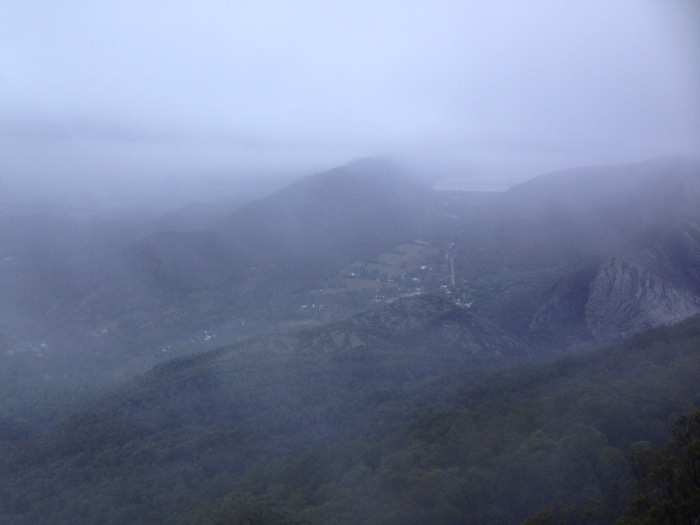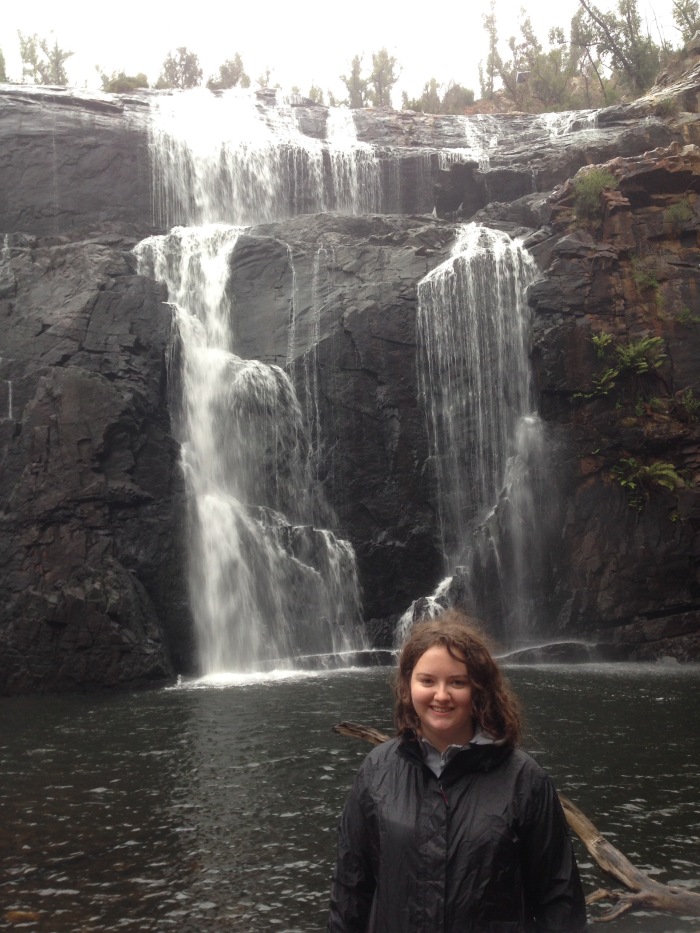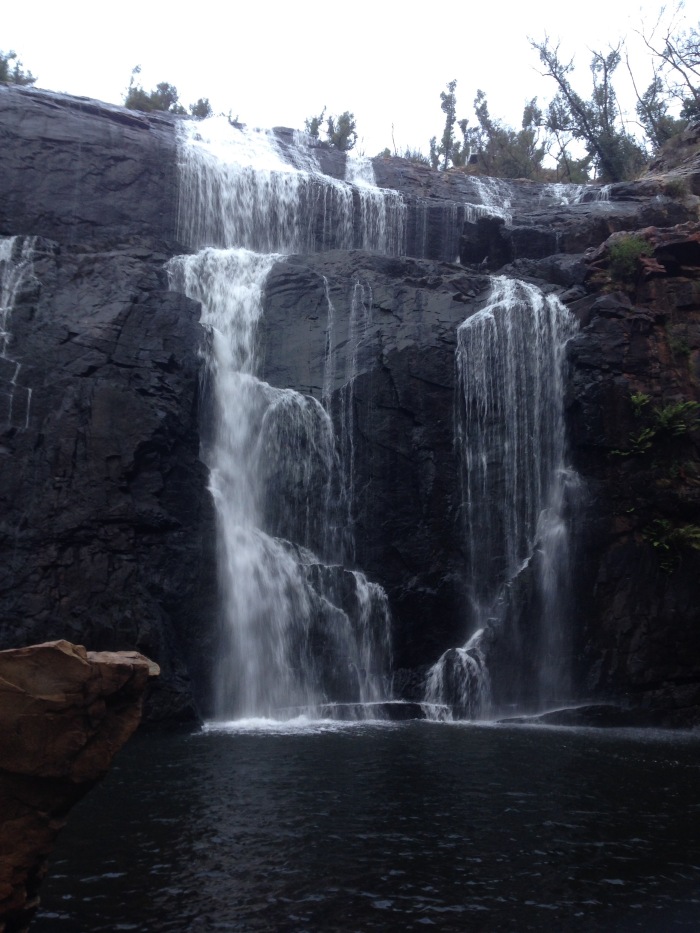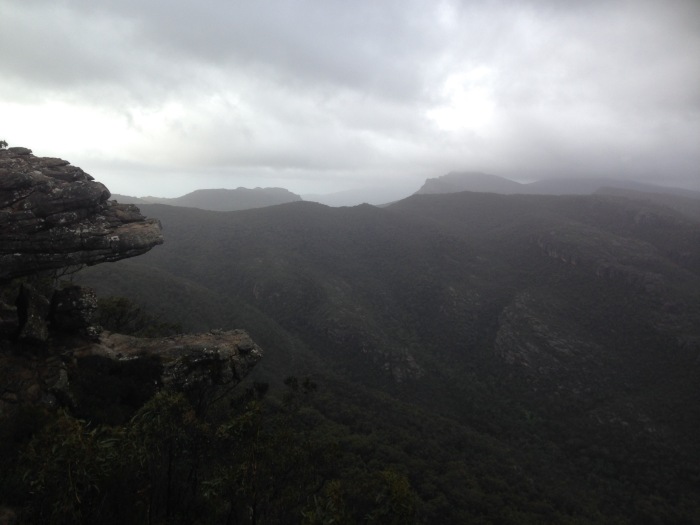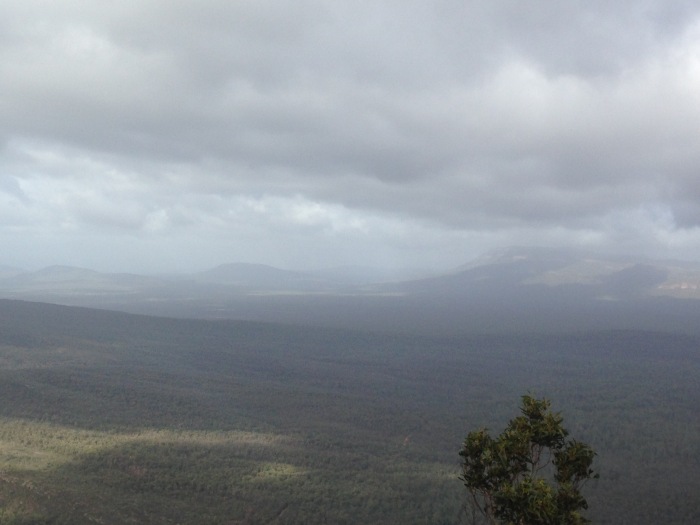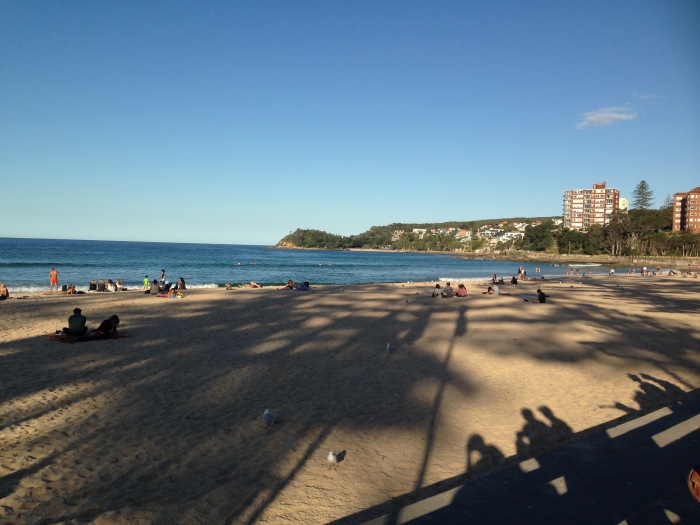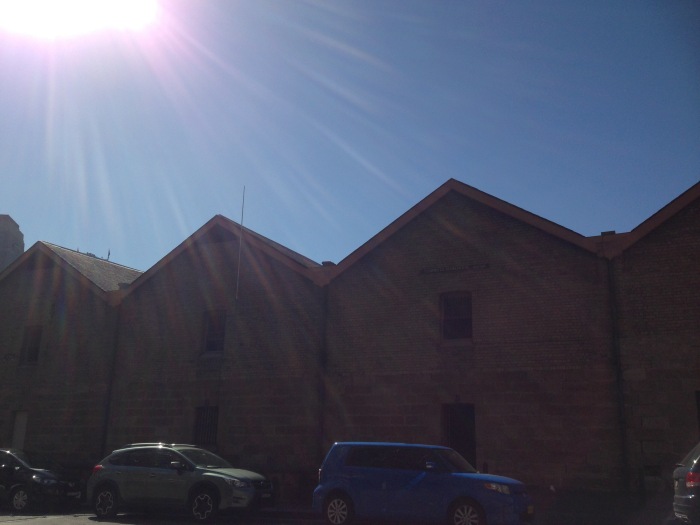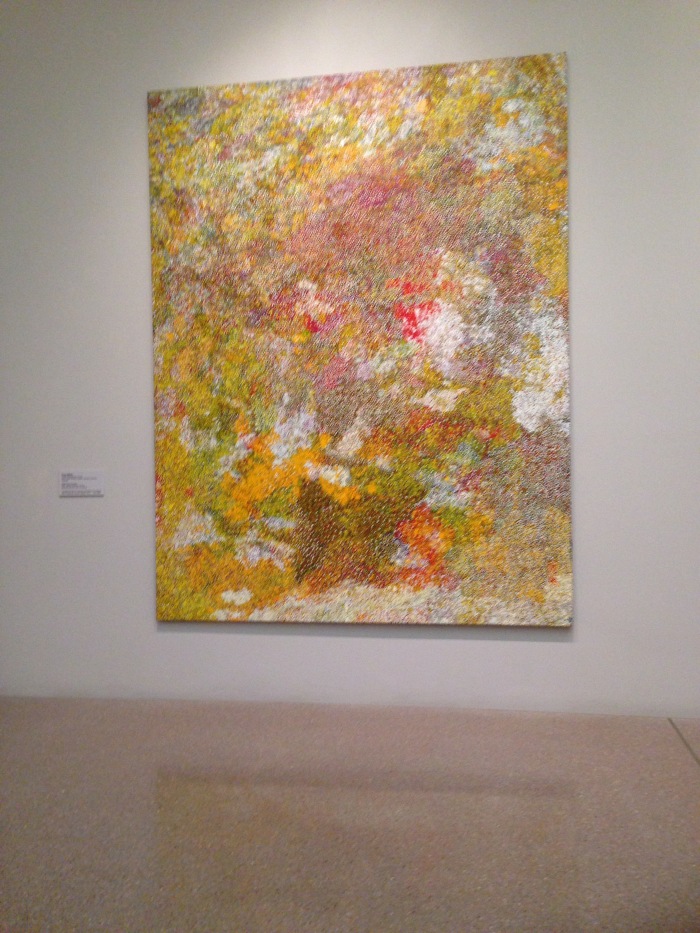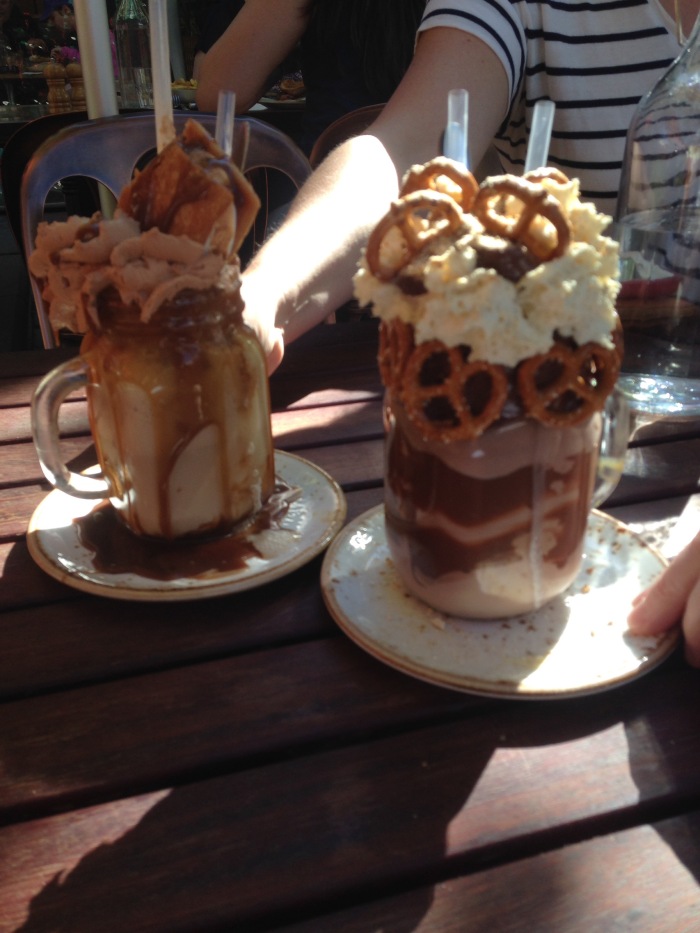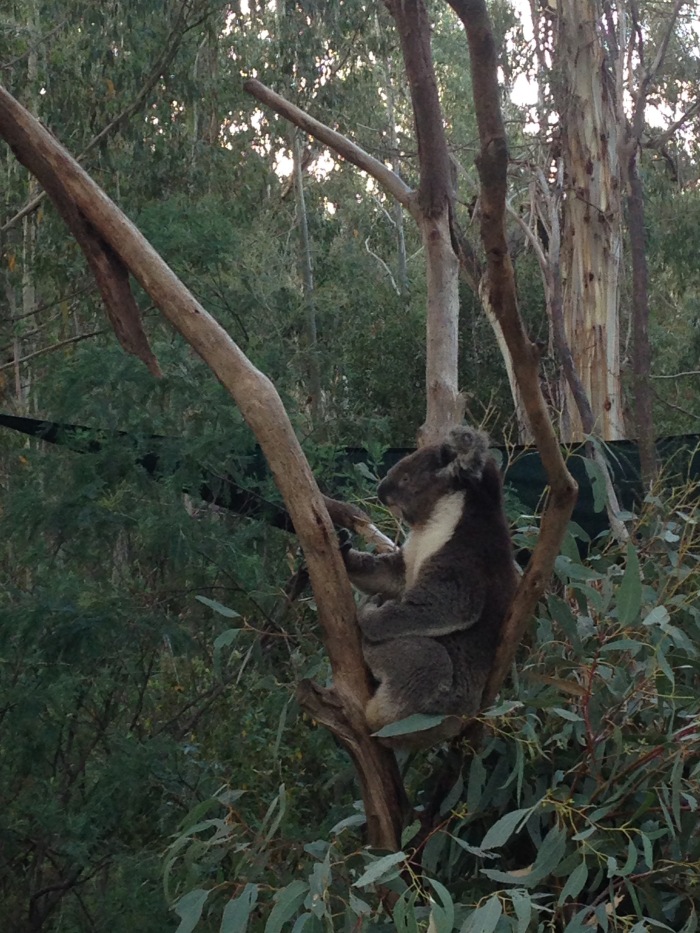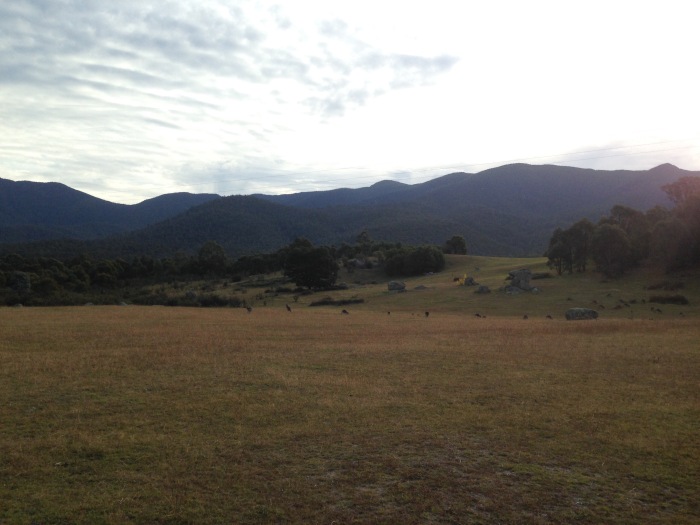My outback adventure began in the town of Alice Springs – the meeting point for our tour up to Darwin. Before the tour I managed to squeeze in a quick didgeridoo lesson – let’s just say I don’t think I have found my future career. Our first day began with a luxurious late start of 6am – 4:30am soon became the norm. As with our other days we spent he early hours driving through the deserted outback. The centre of Australia used to be an inland sea many millions of years ago, meaning there are vast water reserves beneath the ground. As a result, it is a semi-arid region and as there had been rain the week before, it was surprisingly green.

Other than several toilet stops at servos, our first adventure was collecting firewood. In the outback that means finding trees that have been killed by bush fire and ripping them out of the ground. The whole group set about the task and only afterwards were told that the wood was in fact poisonous – even the trees are out to get you! I managed to get a splinter, but I’m fine (don’t worry Mum).

Our first major stop was at King’s Canyon where we did our first hike – a 6km loop of the Rim of the Canyon. You get great views across the region, but have to pay the price with a very steep ascent. The canyon is part of the land of the Luritja people. Perhaps the most beautiful part is The Garden of Eden – nestled in the bottom of the canyon a green oasis amongst the sandstone cliffs. Amongst the sandstone there are fossils of jellyfish, shells and the sea bed – remnants of a long lost sea.


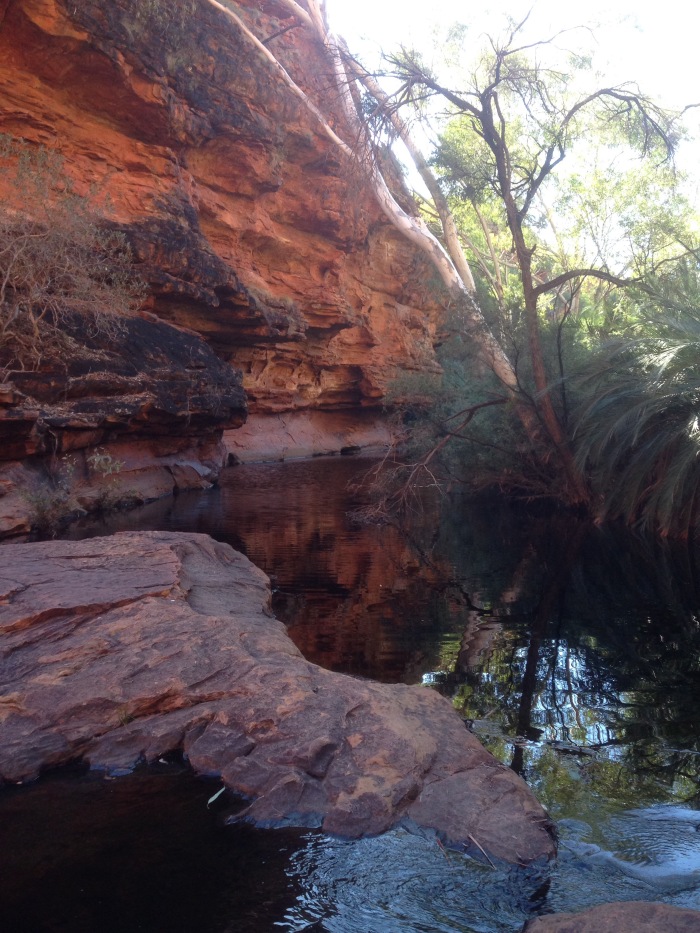
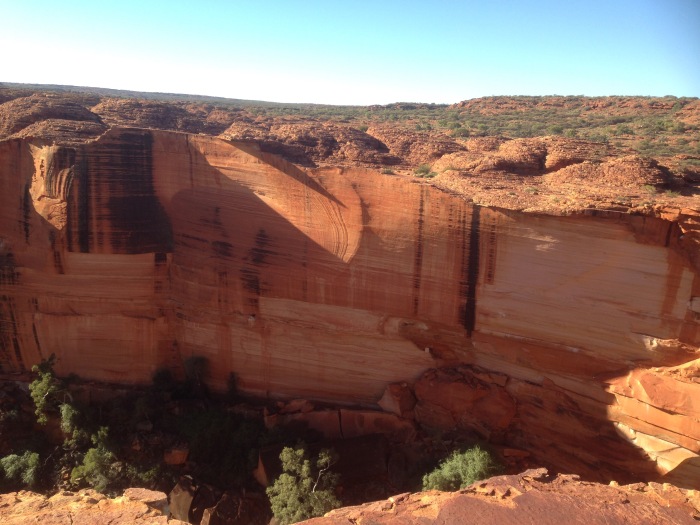

Our first night in the outback was spent round the campfire, eating kangaroo steak – Australia is he only country that eats its national animal. We slept in swags – canvas sleeping bags with built in mattresses under the stars. You can see so much more in the night sky here – Mars, millions of stars and even the Milky Way.


Our second day took us to the Uluru-Kata Tjuta National Park. After catching our first glimpse of Uluru we headed to the cultural centre which focuses on tjukurpa (Aboriginal law, religion and culture) as well as telling of the struggle of the Anangu people to regain the ownership of their sacred sites. The park is now jointly managed by the government and the traditional owners, with the government technically leasing the land from the Anangu.

Our walk for the day was through Kata Tjuta – a group of domed rocks that sits west of Uluru. Kata Tjuta means many heads and is a very significant men’s site. It is an amazing place – formed like Uluru as the mountain range that used to sit in the area was gradually eroded. Both formations continue deep into the ground – it is thought that Uluru might continue for 6km underground. I also managed to purchase a very fetching orange fly net for the walk.




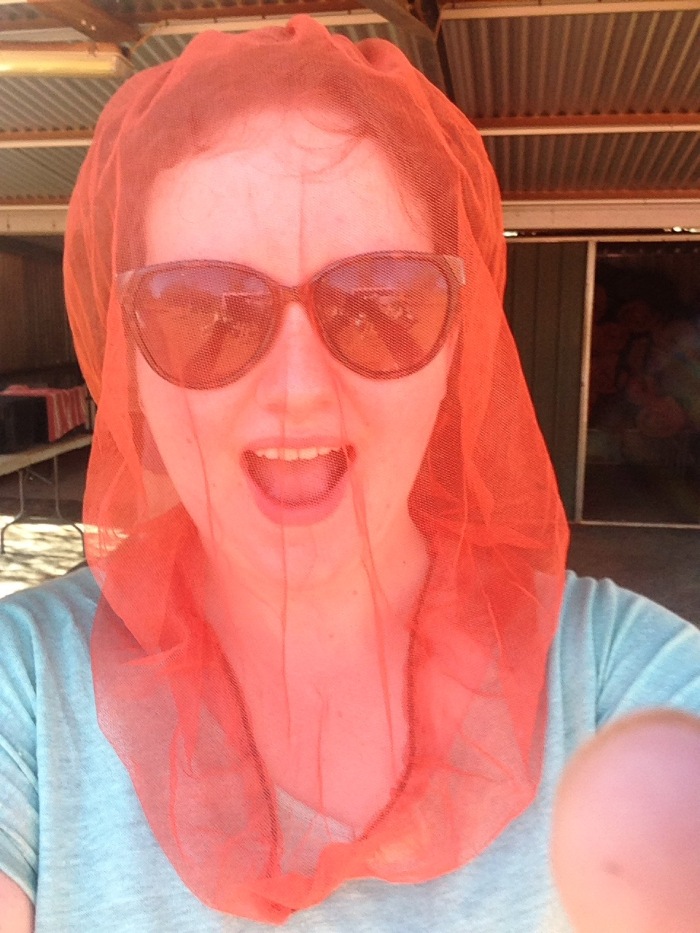
That night we watched sunset at Uluru – a spectacular sight. As the sun gradually sets the rock changes colour. The next morning we got up to see sunrise as well. It is a very special place. Uluru is a very sacred site for the Anangu people – they ask everyone not to climb, but many still persist. I did not climb – it seems very disrespectful to their culture and ignorant of the significance of the Rock. I understand the desire to see the view, but I don’t think it is worth the price.
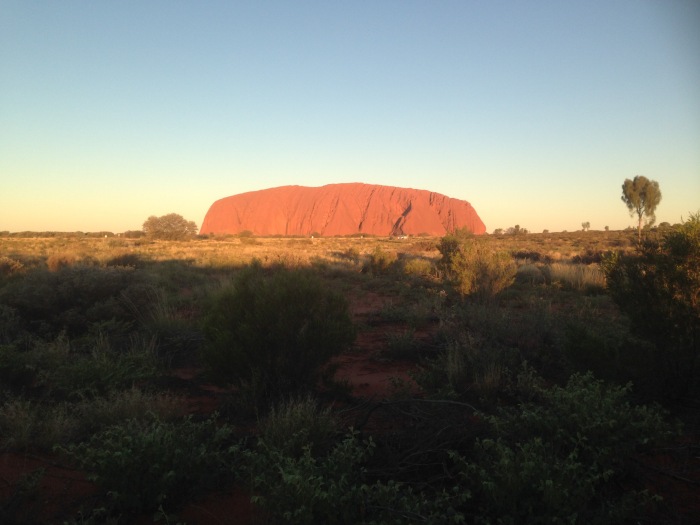
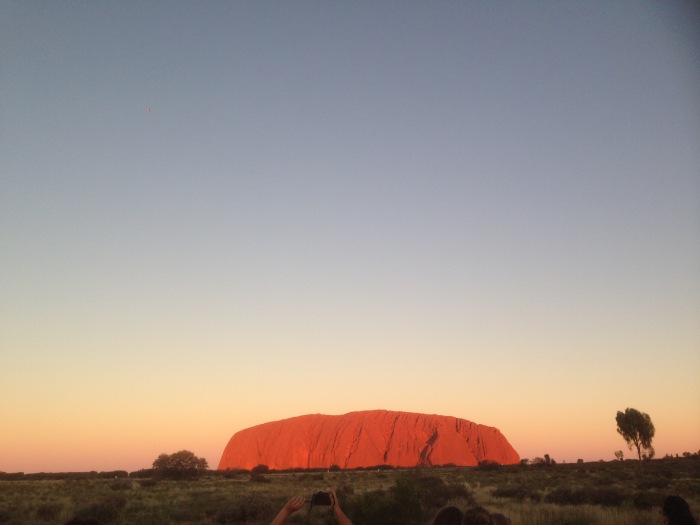

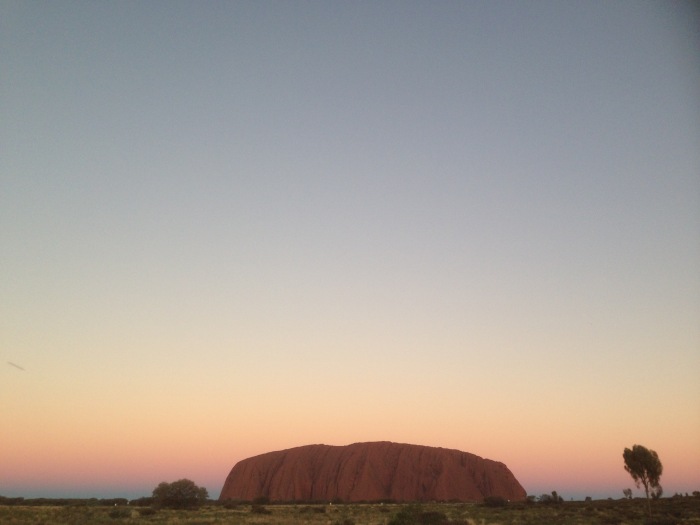


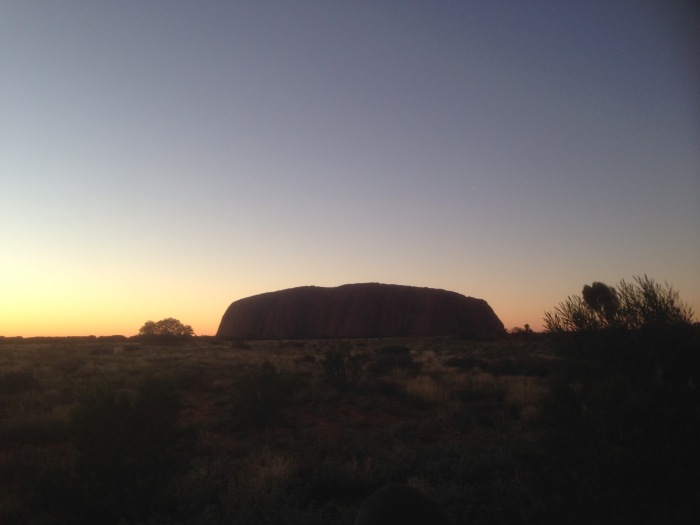


The next leg of the tour took me up to Darwin. Our first day we spent basically the whole day in the bus covering nearly 1000kms. We did stop at the Devil’s Marbles – Karlu Karlu to the Warumungu. The site was an important meeting place for the traditional owners. The large granite boulders are balanced precariously on top of one another and some have even split in two. We also stopped at a beautiful Billabong – a picturesque spot I the middle of nowhere. Our destination was Daly Waters – a station that has a population of 3 in the off-season. We stayed at the famous Daly Waters pub where bras, jackets and shoes adorn the walls – a true outback pub.

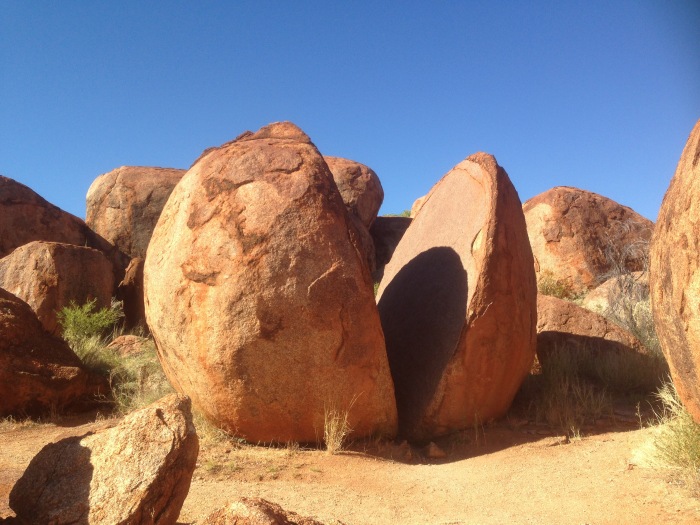



On our final day of the journey to Darwin we began by swimming in the Mantaranka hot springs. A wonderful way to start the day – the water was lovely – warm and crystal clear. After a few more hours driving we arrived in Edith Falls. Following a quick walk we arrived at the upper plunge pools. The water was wonderfully cool in the tropical heat and a beautiful spot for a swim.




I have safely arrived in tropical Darwin – trying to get used to the heat again and preparing for the next adventure.


